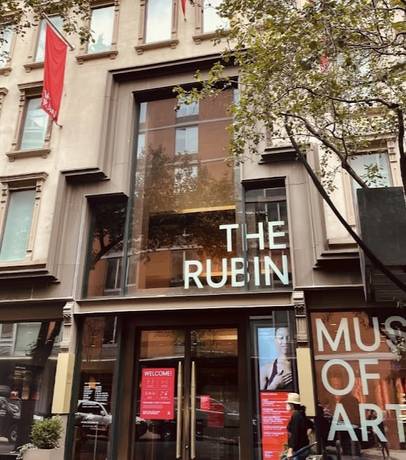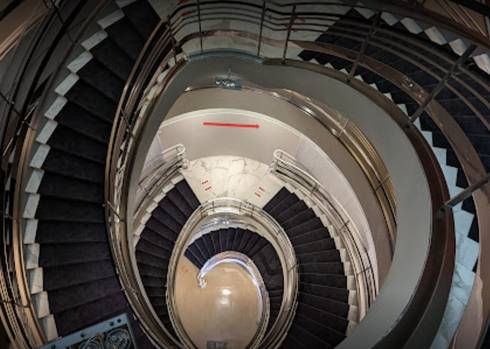
If you are visiting Manhattan, New York City, and want to experience a sui generis art museum, you must not forget to stop by the Rubin Museum of Art.
The Rubin Museum of Art is dedicated to showcasing and promoting learning and understanding related to the Himalayan region’s art. It inspires people to personally connect with the ideas and cultures of this region, and the dynamic environment stimulates and provokes better learning about paintings, textiles, statues, and more art from the Himalayan lands like Bhutan, Tibet, and other Asian regions.
The Mission of the Museum
The Rubin Museum of Art proudly holds multiple exhibitions to promote conversations and dialogues about their collection. It wants to share the art collection and its associated culture with all visitor communities, which is made possible by engaging active and willing learners and stimulating an environment that assists in a better understanding of the world.
The Museum establishes a welcoming environment that transforms any ordinary day to maximize creativity and innovation among its visitors.
Rubin Museum of Art is committed to preserving, displaying, and advancing the culture and art of the Himalayan regions.
The Founders
Shelley and Donald Rubin were the brilliant founders of the Rubin Museum of Art when they were introduced to the beautiful art of the Himalayan regions. In the 1970s, when they saw a breathtaking painting in an art gallery window, they learned about the fascinating form of art in Tibet.
The Thangka painting, which was created many centuries ago, is a unique Tibetan art form in which painting is created on cotton or silk. The painting depicted a Buddhist deity, White Tara. Shelley and Donald had enough to purchase the painting and were so impressed with the colorful art that they returned after months to get another painting they wished to purchase.
They simply kept falling in love with other forms of art associated with Tibet and other Himalayan lands and grew their collection, after which they realized that their possession of this cultural material needed a way through which they could preserve this artwork and, at the same time, share it with people around the world with like-minded interests.
Shelley and Donald began supporting cultural programs that aimed to preserve such works of art in Himalayan regions and established their “Shelley & Donald Rubin Foundation” in 1995 to further support the arts, meet the human requirements in Himalayan lands and NYC, and promote social justice.
The famous White Tara, which initially provoked the passion and love in the hearts of Rubin Museum of Art founders, is not proudly exhibited in the art museum, which is appreciated by the plethora of visitors who come to the Rubin Museum of Art. Donald and Shelley, in their own unique way, started a chain of events that has led to passion, inspiration, and urgency to learn about Himalayan art and the meaning it holds.

Exhibitions at Rubin Museum of Art
Rubin Museum of Art initiates the educational drive that traverses diverse regions, cultures, and narratives as the Museum explores different art forms through its special exhibitions, from contemporary to ancient.
The permanent galleries collection only focuses on Himalayan region art, whereas other exhibitions touch upon diverse art from around the world.
1. Sanctuary for Himalayan Art
Rubin Museum of Art represents the traditions and core meanings behind Himalayan art, as the exhibition opens with a great map that sheds light on the diverse cultural regions of China, India, Bhutan, Nepal, and Mongolia.
Gateway to Himalayan Art is a special Museum collection that is presented in three sections.
- Figures and Symbols
- Materials and Techniques
- Purpose and Function
The exhibition shows the process of the famous Tibetan Thangka painting and stages of the Nepalese lost-wax metal casting, and visitors will experience the life-sized reproductions of the Tibet Lukhang Temple murals.
2. The Tibetan Buddhist Shrine Room
This installation is among the most popular attractions of Rubin Museum of Art, as visitors are immersed in the unique experience which is inspired by traditional shrines. Thangka scroll paintings and other ritual items will be displayed and arranged inside the Buddhist Shrine room on traditional Tibetan furniture.
The ritual mandalas and other bowls and pitchers are used in daily rituals, and ornamental decorations will also be showcased, made of brocade silk and hung on the pillars and from the ceiling.
This rich and immersive experience is an oasis for all those who want to experience the heart of Rubin Museum of Art, as the Shrine Room is adorned with the subtle incense smell and recorded chanting of Tibetan monks and nuns, all of which personifies the religious practices of this land.
3. Healing Practices
Healing practices pay tribute to the holistic practices in Tibetan Buddhism, which are used to restore balance for physical, mental and spiritual well-being.
In Healing Practices, the museum visitors will explore stories that introduce them to the diverse ways of Tibetan Buddhist artworks, along with several objects that accompany personal experiences and stories of the Himalayan Americans.
The Himalayan Practices are centered on the notion that these Buddhist practices have paved the way for physical, mental, and spiritual well-being and how these ancient traditions and practices are adopted and transformed to fit the modern world. The art exhibition aims to inspire every visitor to reflect on their personal journey of healing.
Project Himalayan Art
This is an integrated project divided into three parts:
- Cross-disciplinary Publication
- Online Platform
- Traveling exhibition.
Project Himalayan Art focuses on the incorporation of the Tibetan and Himalayan cultures and art into liberal arts and Humanities to promote the Asian curricula at the higher education level. This initiative was taken by the Rubin Museum of Art to fix the underrepresentation of the Himalayan lands and introduce further teaching resources for its arts and cultures.
Conclusion
This Museum of art and inspirations has a stimulating effect on every visitor, regardless of their age and place of origin, as they immerse in a world of unique paintings and other art forms that pays ode to the Himalayan regions and its otherworldly art and culture. Rubin Museum of Art is truly a place where emotions and generated and fermented, making every visitor fall in love with the art it showcases.
